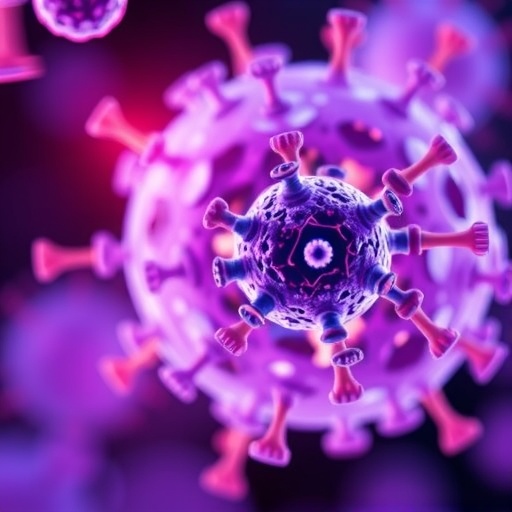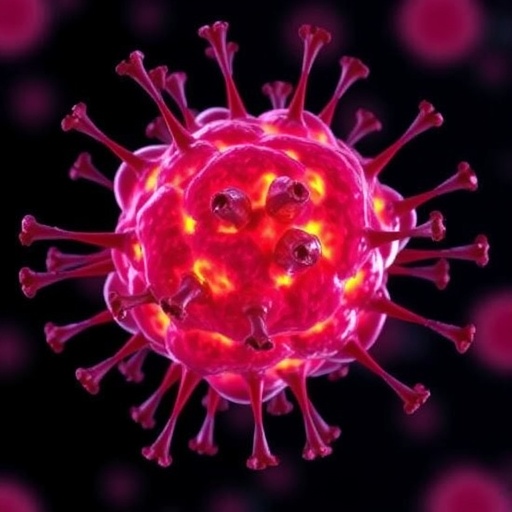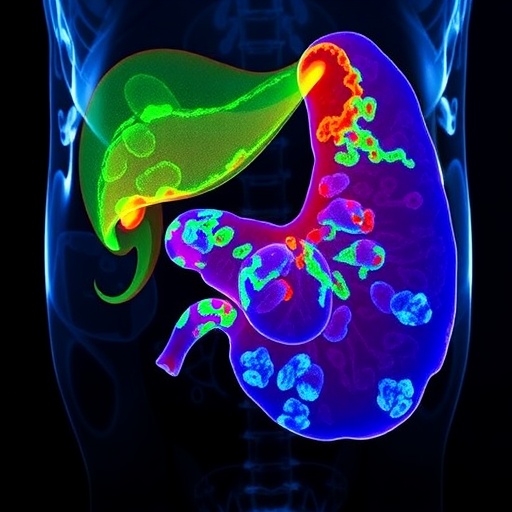
In recent years, chimeric antigen receptor T-cell (CAR-T) therapy has transformed the treatment landscape of lymphoma, offering new hope where conventional therapies have often fallen short. These genetically engineered cells are specifically designed to recognize and eliminate malignant cells by targeting tumor-associated antigens through a single-chain variable fragment (scFv). Upon antigen recognition, CAR-T cells unleash a potent cytotoxic arsenal, including the release of granzyme and perforin, triggering apoptosis via the Fas-FasL pathway and orchestrating an inflammatory milieu to counteract the immunosuppressive tumor microenvironment (TME). Despite groundbreaking successes, CAR-T therapy faces formidable obstacles such as the intrinsic heterogeneity of tumors, the dampening influence of the TME, T cell exhaustion, and potentially severe adverse events, which restrict its broader clinical application.
The complexity of the tumor microenvironment remains one of the most daunting barriers to CAR-T efficacy. Within the TME, an intricate network of cellular and molecular components actively suppress immune effector functions, fostering tumor survival and growth. Immunosuppressive factors like regulatory T cells, myeloid-derived suppressor cells, and inhibitory cytokines conspire to limit the durability of CAR-T responses. This dynamic interplay not only blunts CAR-T cytotoxicity but also accelerates T cell exhaustion, characterized by diminished proliferative capacity and reduced cytokine secretion. Consequently, next-generation CAR-T cell designs are being meticulously engineered to resist these suppressive signals and maintain prolonged activity within hostile tumor niches.
Advances in genetic and molecular engineering have propelled the evolution of CAR constructs far beyond their original frameworks. New-generation CARs are equipped with diverse molecular modules that enhance recognition specificity, circumvent antigen escape, counteract inhibitory signals in the TME, and augment cytotoxic potency. Multi-target CAR-T cells, for instance, simultaneously recognize multiple tumor antigens, addressing the critical challenge of antigen heterogeneity and loss which often leads to tumor relapse. Furthermore, so-called TRUCKs—T cells Redirected for Universal Cytokine-mediated Killing—augment traditional CAR-T cytotoxicity by locally releasing cytokines that stimulate both the innate and adaptive arms of the immune response, effectively recruiting endogenous immune cells to aid in tumor clearance.
.adsslot_BQad3Df8RL{width:728px !important;height:90px !important;}
@media(max-width:1199px){ .adsslot_BQad3Df8RL{width:468px !important;height:60px !important;}
}
@media(max-width:767px){ .adsslot_BQad3Df8RL{width:320px !important;height:50px !important;}
}
ADVERTISEMENT
A particularly innovative approach involves the engineering of immune checkpoint-switching receptors that convert suppressive signals within the TME into activating cues for CAR-T cells. By rewiring inhibitory pathways into stimulatory ones, these receptors help sustain CAR-T function in an environment otherwise hostile to immune effectors. This dual role of checkpoint modulation not only enhances anti-tumor activity but also alleviates exhaustion, a state that markedly impairs long-term efficacy. The integration of these sophisticated signaling circuits underscores the increasing complexity and precision of CAR-T engineering strategies aimed at maximizing therapeutic outcomes.
Beyond modifications to receptor design, the field is exploring the integration of origins and sources of CAR-T cells to improve accessibility, safety, and persistence. Universal CAR-T platforms, including induced pluripotent stem cell (iPSC)-derived and in vivo-generated CAR-T cells, offer scalable alternatives to autologous products, which are limited by manufacturing complexities and variability. These universal platforms hold the promise of readily available “off-the-shelf” therapies with enhanced safety profiles and consistent functional characteristics. As researchers refine these models, the potential to revolutionize lymphoma treatment through broad accessibility is becoming increasingly tangible.
A burgeoning area of interest lies in the interplay between CAR-T cell metabolism, epigenetics, and functional longevity. Metabolic pathways such as glycolysis and oxidative phosphorylation meticulously govern CAR-T cell energy supply and differentiation status, influencing their proliferative capacity and exhaustion susceptibility. Epigenetic modifications, including histone acetylation and DNA methylation, further dictate CAR-T phenotypes by modulating gene expression programs pivotal to persistence and effector function. Understanding and manipulating these molecular processes promises a new frontier in CAR-T optimization, generating cells with enhanced durability and anti-tumor potency.
The intricate balance between efficacy and safety remains a central challenge as CAR-T designs grow increasingly sophisticated. While augmentations in cytotoxicity and immune stimulation heighten tumor eradication potential, they simultaneously pose increased risks of severe toxicities such as cytokine release syndrome and neurotoxicity. The field must navigate these trade-offs carefully, devising regulatory switches and safety mechanisms that enable powerful anti-tumor activity without compromising patient safety. This balancing act is complicated further by genetic risks introduced by complex engineering techniques, underscoring the need for meticulous preclinical validation and clinical monitoring.
In light of these complexities, the ideal CAR-T cell embodies multiple converging features: precise tumor antigen identification, robust and sustained cytotoxic activity, resistance to TME-induced exhaustion, high safety with minimized adverse events, flexible manufacturing, and broad accessibility. Achieving this multifaceted goal demands seamless integration of genetic engineering, immunology, and cellular metabolism insights. Ongoing research is steadily chipping away at long-held limitations, paving the way for CAR-T therapies that provide durable remissions and possibly cures for lymphoma patients worldwide.
The recent comprehensive review published by researchers at the Department of Hematology, the Second Affiliated Hospital of Zhejiang University School of Medicine encapsulates these advances and emerging strategies. This work systematically dissects the molecular mechanisms underpinning various CAR-T modification approaches designed to counteract tumor immune evasion and repressive microenvironments. By detailing novel CAR architectures and their functional benefits, the review contextualizes how each innovation contributes to overcoming specific therapeutic bottlenecks. Their findings extend beyond current clinical CAR-T products, highlighting promising preclinical and translational developments poised to redefine lymphoma immunotherapy.
Notably, the review explores how epigenetic and metabolic controls modulate CAR-T cell fate and efficacy, offering valuable perspectives for future research directions. These convergent networks are tightly regulated, influencing exhaustion and immune memory, thereby shaping systemic antitumor immunity. By appreciating this complexity, researchers can design holistic strategies that not only enhance the intrinsic activity of CAR-T cells but also prolong their functional lifespan within patients, a key factor for sustained clinical benefit.
While the promise of next-generation CAR-T therapies is undeniable, the path forward is fraught with scientific and technical challenges. The progressive layering of modifications increases manufacturing complexity and potential off-target risks. Moreover, conflicts may arise between strategies designed to enhance memory versus those that prioritize immediate cytotoxicity, or between mechanisms promoting lethality and those safeguarding safety. Navigating these intricacies requires judicious design choices and balanced clinical evaluation to develop optimized CAR-T therapies that fulfill the promise of personalized, effective lymphoma treatment.
In summary, the field of lymphoma CAR-T therapy is accelerating rapidly, fueled by cross-disciplinary innovations in synthetic biology, immunology, and genomics. The future of CAR-T treatment lies in the development of multifunctional, robust cellular therapeutics capable of surmounting the myriad obstacles posed by tumors and their environments. With continued collaborative effort, it is plausible that these advanced CAR-T cells will bring about a paradigm shift in oncology, offering lymphoma patients more durable remissions, improved quality of life, and hope for long-term cure.
Subject of Research: Immunotherapeutic enhancements in CAR-T cell therapy for lymphoma
Article Title: Advances in strategies to improve the immunotherapeutic efficacy of chimeric antigen receptor-T cell therapy for lymphoma
News Publication Date: 15-Apr-2025
Web References: DOI: 10.20892/j.issn.2095-3941.2024.0538
References: Information sourced from the published review from the Department of Hematology, the Second Affiliated Hospital, Zhejiang University School of Medicine, Cancer Biology & Medicine, 2025
Tags: CAR T cell therapy advancementsCAR-T therapy adverse effectscytotoxic mechanisms of CAR-T cellsenhancing CAR-T response durabilitygenetically engineered T cellsimmunosuppressive factors in cancerlymphoma treatment innovationsnext-generation CAR-T strategiesovercoming cancer immunotherapy barriersT cell exhaustion in immunotherapytumor microenvironment challengestumor-associated antigen targeting





